The 6 Baby Crawling Types Explained

Crawling is an exciting time for you and your baby. With this milestone, your little one will finally gain some independence and be able to explore on their own. What you may not realize is that there are different baby crawling types that could be completely normal for your infant.
The first year of a baby’s life has many changes, including learning to sit, learning to walk, and growing their muscles. And just as with nearly everything that babies learn, there’s a progression toward crawling. Babies will first learn how to hold their heads up and look around before learning to roll, scoot, and crawl.
This is why tummy time is an essential part of encouraging your baby to crawl by helping them first learn to lift their head. This will help strengthen their necks and get them ready for movement. Tummy time helps with gross motor and total development, so parental support is key. Crawling tunnels can also help encourage babies to move and explore.
As your baby gets stronger, they will begin to experiment with different ways of getting around. Before you know it, your little one will be transitioning in and out of these crawling styles and onto the next phase. That said, it’s important to remember that every baby is different, including how your baby learns to crawl—and some babies may skip this milestone altogether.
You will learn:
- The different types of crawls.
- When babies might use these crawls.

Rolling Crawl
After your child gains some strength, they may begin with rolling to get where they need to go rather than actually crawling. This could be a transitional phase before they start using their arms and legs in limited movement as they gain coordination. In time, the brain will get curious about their surroundings and want to see more as they progress, which could lead to another style of crawling.
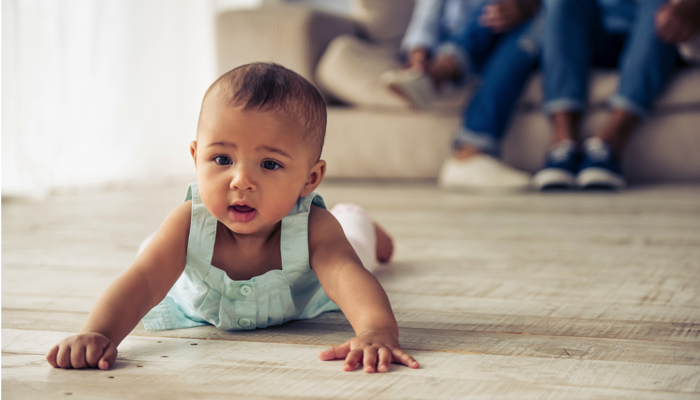
Belly or Commando Crawl
With the belly crawl or commando crawl, babies drag their bellies on the floor instead of being up on their hands and knees. They may next use this belly crawling to gain additional strength for the next stage.
For this type of crawling, your baby may not use their legs and feet much at all, or they may alternate feet and shift their weight from side to side. And before they belly crawl forward, babies may belly crawl backward. Although this looks a little different from a traditional crawl, this type of pushing is essential for strengthening and coordinating the shoulders and torso to help with both crawling and sitting.
Why belly crawling is important:
- It helps babies learn how to manage and shift body weight.
- It increases eye and hand coordination.
- It helps them travel and explore.
- It teaches joints to coordinate with hands and knees.

Classic Hands and Knees or Cross Crawl
This classic crawl is probably the one that you are most familiar with and the type we associate most with learning to crawl. In this crawling style, your baby will put weight on both their hands and knees. Then, the baby crawls by moving one arm along with the opposite knee forward at the same time.
Once your baby is doing the classic hands and knees crawl, you can even help encourage them with crawling toys that they may want to reach.
Why classic crawling is important:
- It prompts the brain halves to cross information and develop nerve fibers by using the opposite side.
- It improves eye-hand coordination.
- Babies begin to be able to cross the midline.
- It supports reading skills.
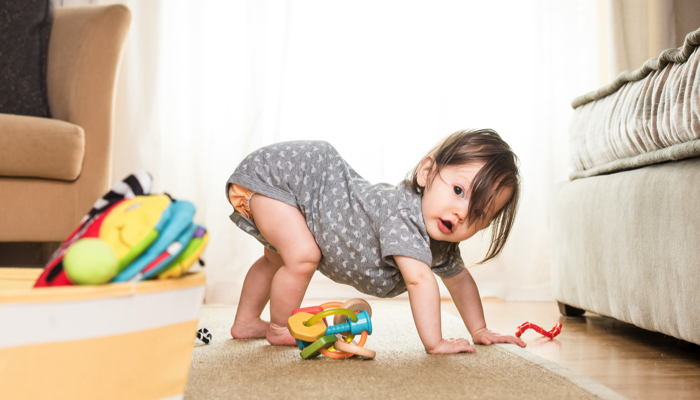
Bear Crawl
The bear crawl is similar to the classic crawl, but instead of being down on their knees, the babies keep their legs straight. Essentially, they are walking on their hands and feet like a bear.
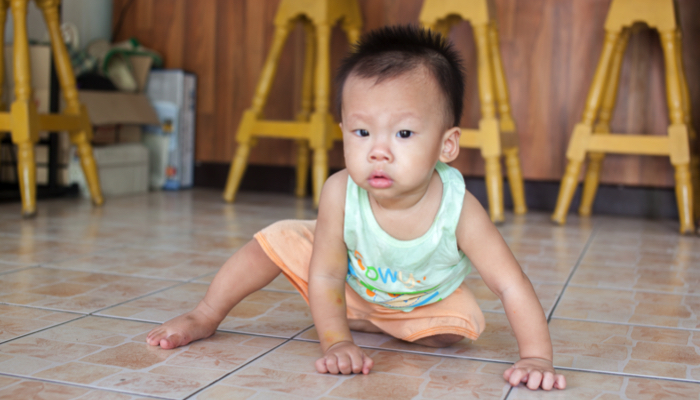
Crab Crawl
The crab crawl happens when babies move themselves along with their hands while moving sideways or backward like a crab. Often, they will only use one leg to move around with this style. This type of crawl can be very frustrating for crawling babies because they will be heading away from where they want to go by scooting backward along the floor.

Bottom Scoot Crawl
The bottom scoot crawl is exactly what it sounds like—instead of having their bellies down and using their arms and legs, your baby may scoot their butt along the floor while using their arms to help them move. Babies usually do this while sitting upright.
This type of baby crawl may actually result from constantly propping him into a sitting position or always trying to support him before he can do it on his own. You can help your baby by placing him on his belly to encourage him to begin crawling from that position.
FAQs
What is a lesser-known style of crawling?
The leapfrog crawl is another one that you may encounter with your baby. This type of crawling happens when the baby makes a bridge with her arms and legs and then uses them to thrust herself forward. This one just sounds like the type of thing where you may need protective equipment like crawling knee pads.
How can parents encourage their children to crawl?
Join your kids on the floor and give them as much time as possible to discover how to move around. Also, make sure not to prop your little one up into a sitting position all of the time. Strengthening their bodies on their own is an important step on the road to standing and walking.
What causes asymmetrical crawling?
Asymmetrical crawling is categorized as when babies get around by primarily using one side of their bodies. By crawling in this manner instead of one of the other styles, babies may have issues with the body, vision, and strength. Tummy time can help babies build up strength equally on both sides of the body.
It is an exciting time when your baby learns to crawl around. But it can also be stressful to have your little one exploring on their own, so it’s important to babyproof during this time. Otherwise, just have fun with this age!
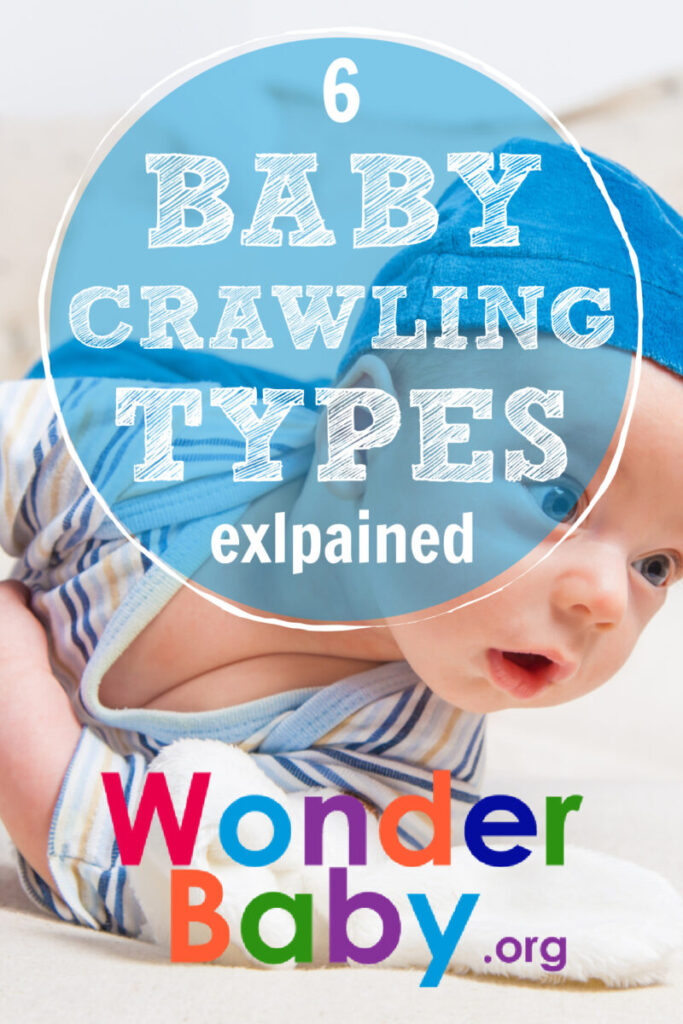
Related Posts

Crawling
Baby Hates Tummy Time? Try These Alternatives Instead!
If your baby hates tummy time, there’s hope! These 5 alternatives will keep your baby smiling while on their belly.

Crawling, Visual Impairment
When does a blind baby start crawling?
When does a blind baby usually start to crawl? When should I start to be worried that there is another issue besides blindness?
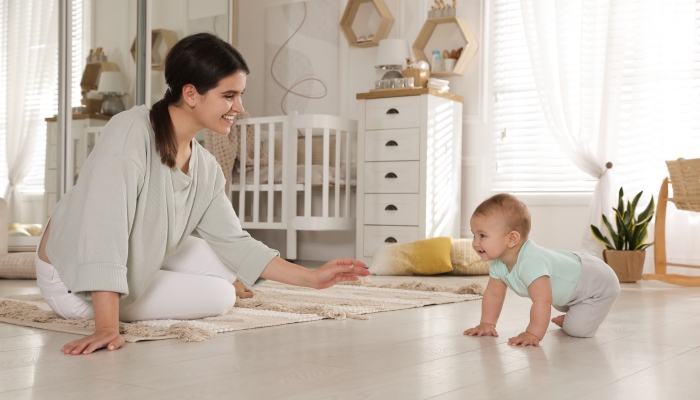
Crawling
Stages of Crawling: When and How They Happen
Your baby will learn to crawl in their own way and at their own pace. The crawling style your little one chooses will also influence when they start moving.